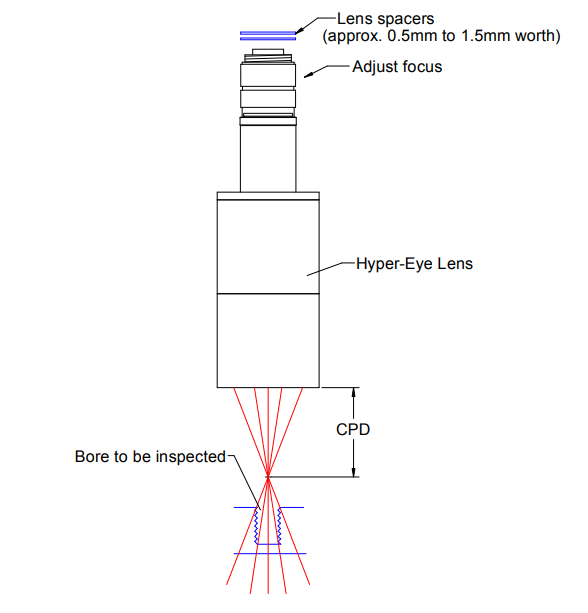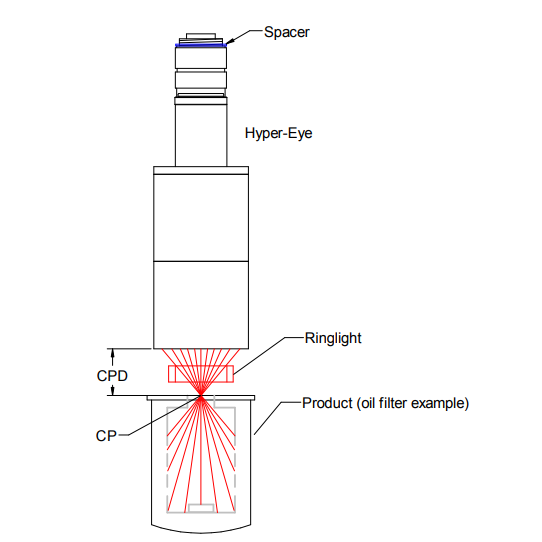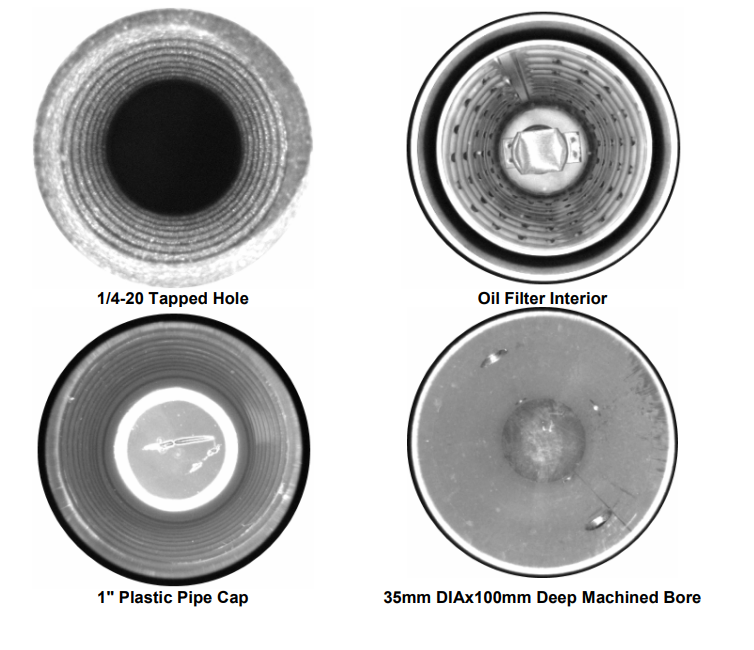BORESCOPE
Hyper-Eye™ User Notes: Borescope
Hyper-Eye™ hypercentric lenses may also be used as long stand-off borescopes for inspecting the insides of drilled or tapped holes, container interiors, or just a "peephole” view through a small space. While such a function isn't a new idea, Hyper-Eye™ lets you acquire such a view while giving you lots of space to introduce lighting. As machine vision users know, lighting flexibility can often make or break an application.
So, how do you do it? Just add a lens spacer (0.5mm to 1.5mm should suffice) between the lens and your c-mount camera. Place the object to be viewed farther than the convergence point distance (CPD) for the lens, and re-focus. The exact distance depends on the bore diameter and depth, but it's pretty easy to find the best view.

The next page shows an example of a Hyper-Eye lens being used to inspect the interior of a narrow mouthed container, in this case an automotive oil filter. Notice the Convergence Point (CP) is right at the opening, thus leaving lots of room for lighting.
*Adding spacers to increase focus distance is non-intuitive, but that's how it works for Hyper-Eye!


Frequently Asked Questions
1. What are inspection borescopes and how are they used in industrial applications?
Inspection borescopes in general are specialized lenses designed to view often otherwise inaccessible areas such as narrow cavities, bores (of course!), or other small openings. Sometimes borescopes include a built-in method of illumination, such as fiber optics. Inspection borescopes often are configured as long, narrow tubes, either rigid or flexible, for fitting inside the areas to be inspected. They can be used by eye, or connected to a camera.
Light Works' patented Hyper-EyeTM hypercentric lenses may also be used as long-standoff inspection borescopes, many times without the need for the lens to be inserted into the inspection area.
2. Which industries benefit most from using industrial borescopes?
Any industry that produces parts with cavities or bores might benefit from using an inspection borescope. In particular, complex castings such as those produced by the automative industry may use borescopes to inspect cast, or later machined and threaded holes for quality. Of course threaded holes occur in many other industries as well. Packaging industries (bottles and containers) also may greatly benefit from industrial inspection borescopes, especially for interior inspection of the bottles or containers through the often narrow openings.
3. How do I choose the right inspection borescope for my specific needs?
On this question we'll have to punt the ball, so to speak. Each inspection borescope provider of these unusual lenses may have specially configured products, and your best bet is to politely inquire with them. One feature to look for, if you're interested in very deep hole inspection that you're sure will require insertion of the inspection borescope, is self-illumination. This is achieved with fiber optics.
4. Does Light Works, LLC. provide after-sales support or training for inspection borescope use?
As with all our products, Light Works is happy to provide information, training, and support before and after sales of our Hyper-Eye lenses used as long-standoff inspection borescopes.
